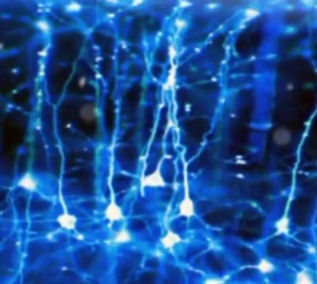 |
 |
|
 |
 |
About Us | Contact |
|
|
13/02/2011 - Electric fields are integral to the functioning of a living brain
In a new paper [1], published in top journal Nature Neuroscience, neurobiologists at the California Institute of Technology (Caltech) have confirmed that very weak varying electric fields in brain tissue significantly affect neuronal behaviour. This is really the first hard neurological evidence that suggests subjecting our heads to significant EMFs (especially the very high electric fields underneath high voltage overhead powerlines and also low frequency magnetic fields from mobile phones that induce low frequency electric fields in the user's brain) may well cause the interference (electromagnetic compatibility, EMC) problems that many people, including us, have suspected [2]. Many scientists have long dismissed this possibility for low level fields - although they use very high pulsed magnetic fields (that induce electric currents and hence electric fields in brain tissue) known as Transcranial Magnetic Stimulation to "reset the brain". Although this treatment has been successfully used for many years, the actual mechanism by which it works is not proven. It is thought that it depolarises the synapses - but this latest research suggests that they may be a more subtle electric field effect synchronising mechanism at work. The fact that synchronisation effects have now been found at very low electric field levels has potentially large implications for general EMF exposure guidelines. The brain, both awake and sleeping, is awash in electrical activity and not just from the individual pings of single neurons communicating with each other. In fact, the brain is enveloped in countless overlapping electric fields, generated by the neural circuits of scores of communicating neurons. The fields were once thought to be an "epiphenomenon" similar to the sound the heart makes - which is useful to the cardiologist diagnosing a faulty heart beat, but didn't serve any purpose to the body, says Christof Koch Professor of Cognitive and Behavioral Biology and neural systems at Caltech. New work by Costas Anastassiou, Christof Koch and colleagues suggests that at least low frequency electric fields do much more and suggest that they may represent an additional important form of neural communication. Koch said "So far, neural communication has been thought to occur almost entirely via traffic involving synapses, the junctions where one neuron connects to the next one. Our work suggests an additional means of neural communication through the extracellular space independent of synapses." Listen to this extract of brain cells "talking together" from a 2008 BBC Radio 4 interview with Professor Brian Ford. The full, interesting, interview is available (n.b. a 6 MB download). Measuring those fields and their effects required positioning a cluster of tiny electrodes within a volume equivalent to that of a single cell body - and at distances of less than 50 millionths of a meter from one another; this is approximately the width of a human hair. "Because it had been so hard to position that many electrodes within such a small volume of brain tissue, the findings of our research are truly novel," Anastassiou says. Previously, he explains, "nobody had been able to attain this level of spatial and temporal resolution." An "unexpected and surprising finding was how already very weak extracellular fields can alter neural activity," he says. "For example, we observed that fields as weak as one volt per meter robustly alter the spiking activity [firing] of individual neurons, and increase the so-called 'spike-field coherence'" - the synchronicity with which neurons fire. "Inside the mammalian brain, we know that extracellular fields may easily exceed two to three volts per meter. Our findings suggest that under such conditions, this effect becomes significant." What does that mean for brain computation? At this point we can only speculate, Koch says, "but such field effects increase the synchrony with which neurons become active together. This, by itself, enhances the ability of these neurons to influence their target and is probably an important communication and computation strategy used by the brain." Electric field activity, even from external fields, during specific brain states may have strong cognitive and behavioral effects. Anastassiou stated "Physics dictates that any external field will impact the neural membrane. Importantly, though, the effect of externally imposed fields will also depend on the brain state. One could think of the brain as a distributed computer - not all brain areas show the same level of activation at all times." References and Links
This page has links to content that requires a .pdf reader such as |


 Electric fields are an essential and integral part of the functioning of a living brain
Electric fields are an essential and integral part of the functioning of a living brain